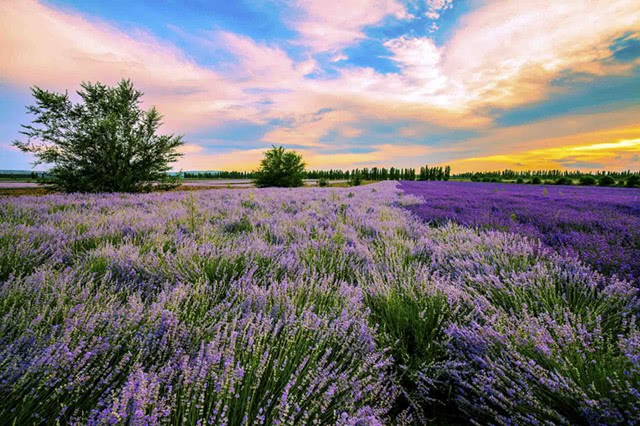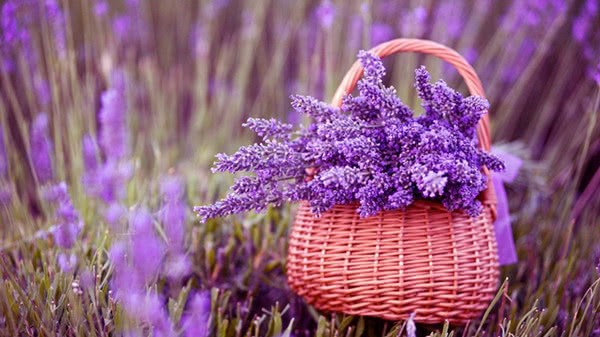Can lavender grow old? That's the reason.

Lavender has been a popular vanilla since Roman times. In addition to blue, dark purple, there are other common colors, such as pink, white and so on. The whole plant contains oil glands in the villi of flowers, leaves and stems, so as long as the oil glands are gently touched and ruptured, a slightly sweet and fresh aroma will be released; in the early days, it often appeared in French monasteries as a medical herb. If you have a chance to take a walk in the lavender field, you will never forget its special fragrance. Some flower lovers complain that lavender is good-looking and difficult to raise. In fact, most of the reasons are that they have not mastered the habits of lavender. Today, let's go with the editor to understand the secret of lavender maintenance.
The five elements of lavender maintenance are as follows:
1. Plenty of sunshine
What kind of light does lavender like? It's simple, all-day sunshine. Which piece of land in the yard has the strongest sunshine and which piece of land is the hottest, the place where the sun shines directly is the most suitable place to grow lavender. Sunshine is very important to the growth of lavender, so the land must be selected. Most of the shady areas in the yard belong to half-day sunshine or even less than half-day sunshine, so it is not suitable to be used as a home for lavender. But there are few exceptions, such as feather leaf lavender does not need so much light, too much light will weaken its growth, do not blossom or even eliminate buds, and need to be shaded by 50%, so in the half-day part of the yard can make feather leaf lavender grow better.
2. Enough water
Do you know? Most lavender dies from your excessive "doting"-moisture control is the most important part of taking care of lavender.
The owner kept watering, causing the roots to rot and eventually the plants withered. Lavender is afraid of flood and drought, so it doesn't need to be watered all the time. There is an indicator for reference, such as British lavender, take a closer look at the petiole, usually lavender leaves will tilt up when there is plenty of water. When the sun keeps shining and begins to lose water, the petiole will gradually flatten out, and when the petiole flattens, it is the best time to water, rather than watching the soil dry. The best time to water is in the morning or evening. Do not water it at noon in midsummer-the water temperature in the water pipe is too high. If you water the plant, it is easy to cause lavender death.
Also like this sprinkler sprinkles uniform water droplets, the sun shines will cause the effect of convex lens, burn leaves or flowers, causing spots. Therefore, the amount and timing of watering need to be paid close attention to in the daily care of lavender.
3. Keep ventilated to avoid muggy
Lavender is a plant that likes the sun. It grows well under sunny conditions, but it is most afraid of muggy heat, so it should be well ventilated. The suitable growth temperature of lavender is 15: 25 ℃, and the highest is 35 ℃. If it is higher than 38 ℃ for a long time, the plant will show charred symptoms. Well-drained soil for growing lavender needs good drainage, because lavender is afraid of flooding, and high-viscosity soil will suffocate the roots of lavender due to stagnant water.
4. Soil medium
Only when the soil has good drainage, the root system of lavender can grow normally. Therefore, it is necessary to choose a medium with good drainage. The most suitable cultivation medium ratio for them is: 1 peat 3 peat soil, 1 hand 3 vermiculite or perlite, 1 hand 3 orchard soil. These can be bought in the flower market, and the price is not expensive.
5. Proper pruning
Lavender needs to be pruned every year in order to keep the plant compact and vigorous. Generally, a light pruning can be carried out in early spring to keep the lavender hedge or individual plant in good shape, and the flowering period can be delayed slightly. After blooming at the end of summer, pruning off already blooming or withered flowers can help plants give birth to the next wave of youth. French lavender and feathered lavender bloom almost continuously throughout the summer after reasonable summer pruning. When pruning, you can use pruning shears to cut off the leaves grown in the previous season, leave branches with bud points or 2-5 cm active branches after pruning, and make sure that the pruned branches do not fall in the plant, so as not to cause new branches to rot.
- Prev

How to build a garden with lavender as its theme?
Lavender, also known as perfume plant, spirit vanilla, vanilla, yellow vanilla, Lavender, belongs to the Labiatae lavender genus, originated in the Mediterranean coast, Europe and Oceania islands, and then widely cultivated in the United Kingdom and Yugoslavia. Lavender is here.
- Next

Sudden major signal release industry large-scale adjustment may come
Recently, Thomas Sargent, a Nobel laureate in economics and an American economist, said: China's economy is undergoing a process of upgrading consumption from an investment-driven model to a consumption-driven model.
Related
- Wuhan Hospital Iron Tree Blooming Result Was Instantly Frightened by the Gardener Master
- Which variety of camellia is the most fragrant and best? Which one do you like best?
- What is the small blue coat, the breeding methods and matters needing attention of the succulent plant
- Dormancy time and maintenance management of succulent plants during dormancy
- Minas succulent how to raise, Minas succulent plant pictures
- What are the varieties of winter succulent plants
- How to raise succulent plants in twelve rolls? let's take a look at some experience of breeding twelve rolls.
- Attention should be paid to water control for succulent plants during dormant period (winter and summer)
- Watering experience of twelve rolls of succulent plants
- Techniques for fertilizing succulent plants. An article will let you know how to fertilize succulent plants.

